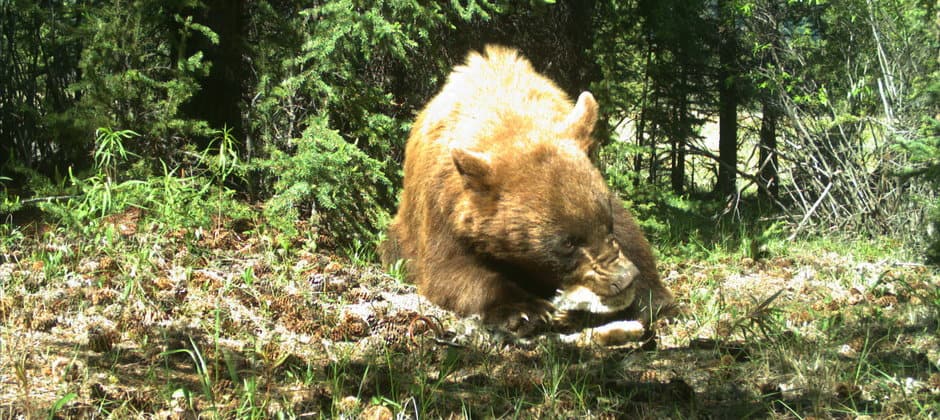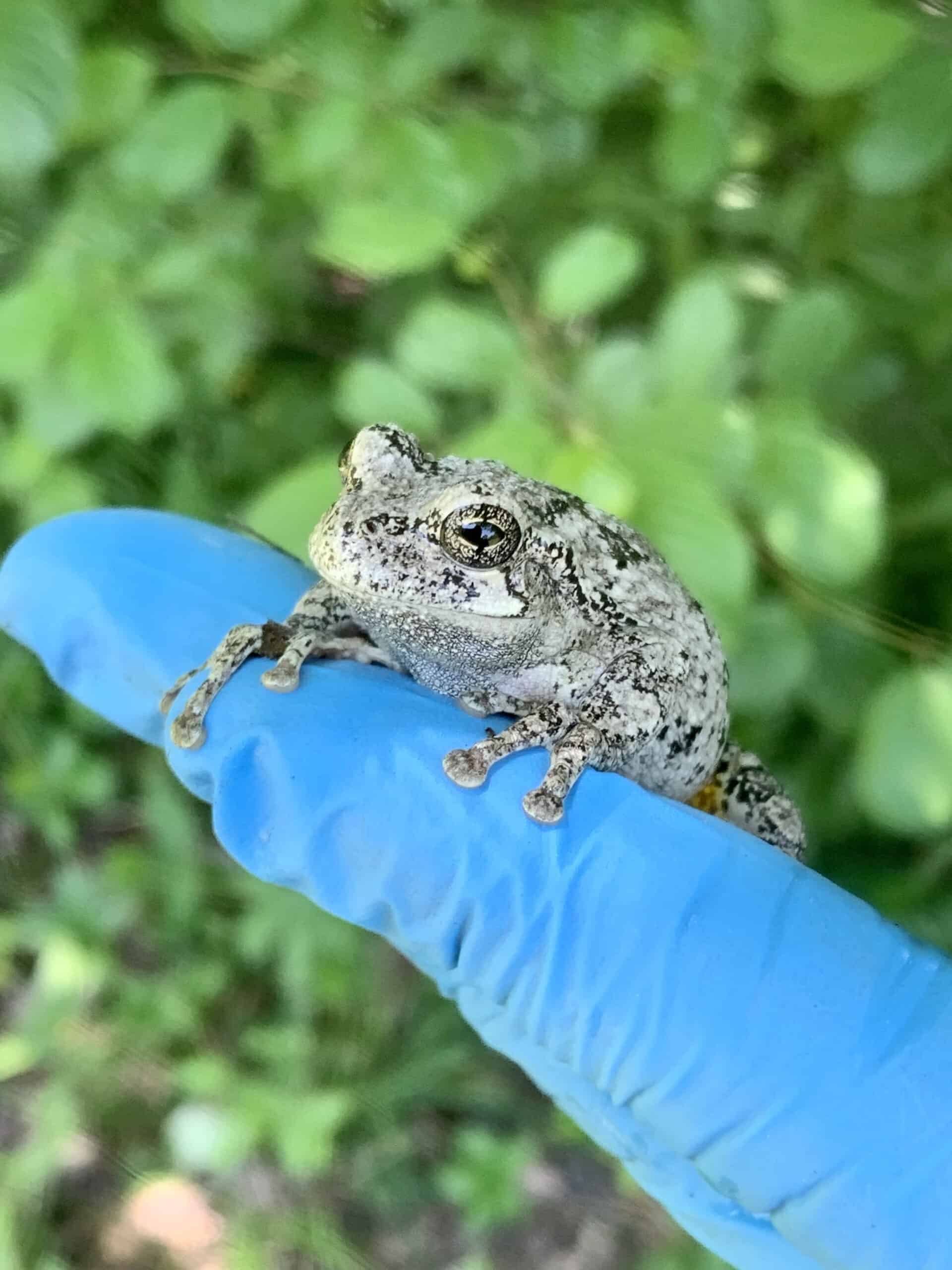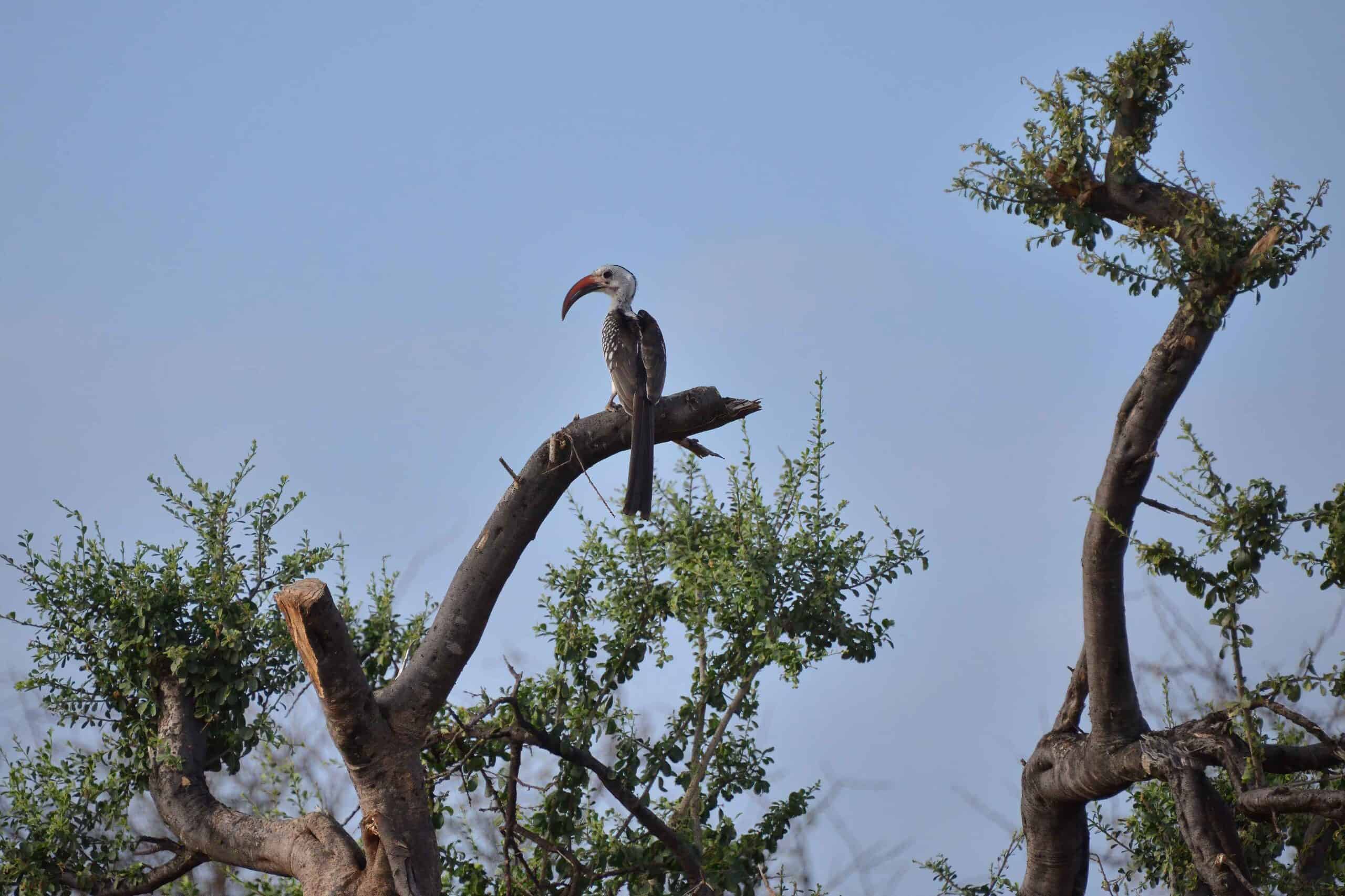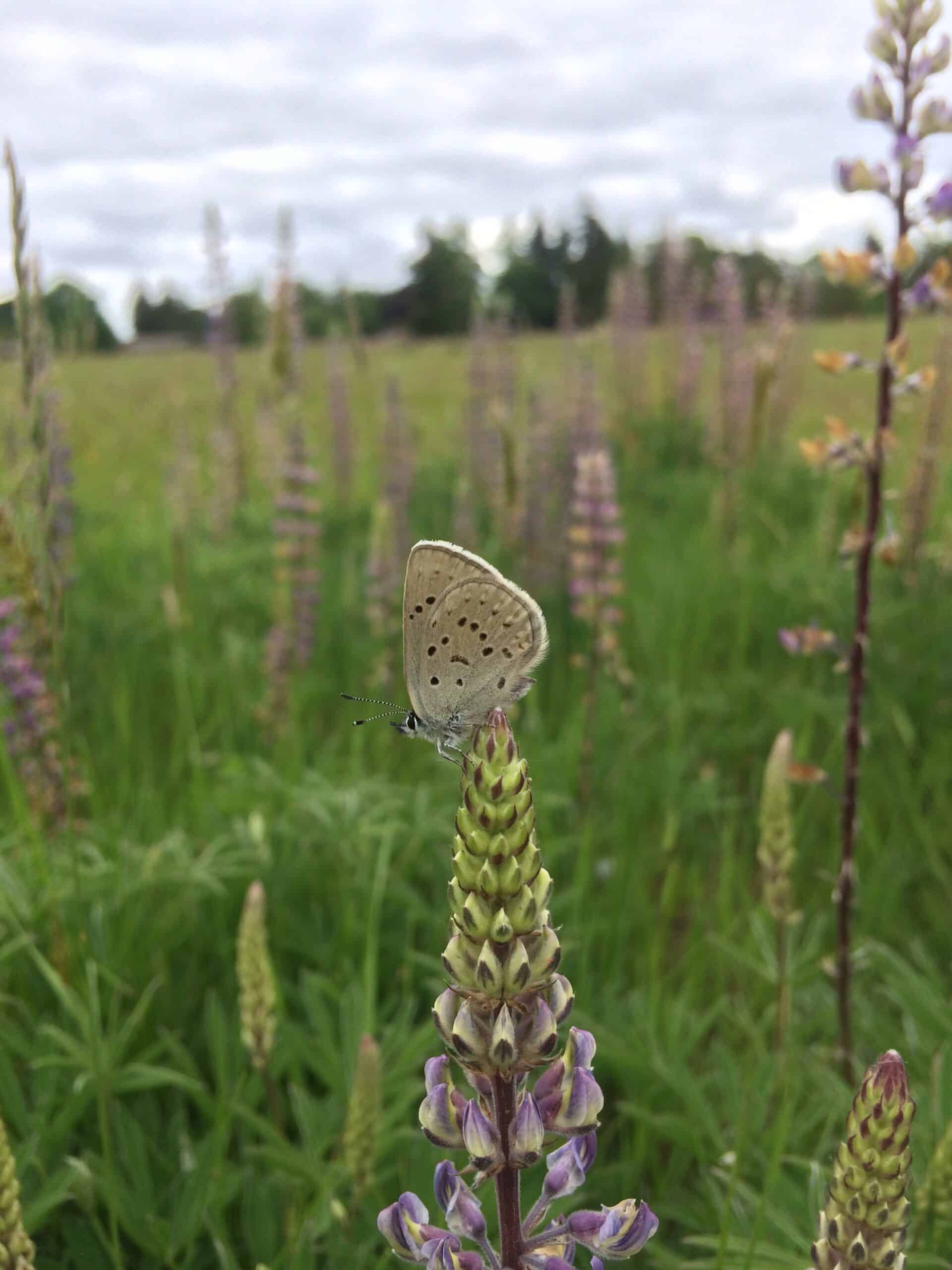Share this article
Wild Cam: Types of scavengers vary based on live prey abundance
It was the summer of 2015 in Yukon, Canada when Michael Peers and his fellow researchers deployed a trail camera near a snowshoe hare carcass to see what it might reveal. The team was working on other research on Canada lynx at the time, and they were collecting camera trap shots for the sake of curiosity.
After a few days, they’d captured photos of both a short-tailed weasel (Mustela erminea) and a Canada lynx (Lynx canadensis) visiting the carcass. The images surprised them. Peers, then a PhD student at the University of Alberta, thought that lynx rarely scavenged carcasses. They captured so much activity that he and his colleagues decided to formalize their curiosity and put out more carcasses with trail cameras.
“It came about opportunistically when we were in the field,” said Peers, now a postdoctoral biology fellow at Memorial University of Newfoundland.
Enlarge
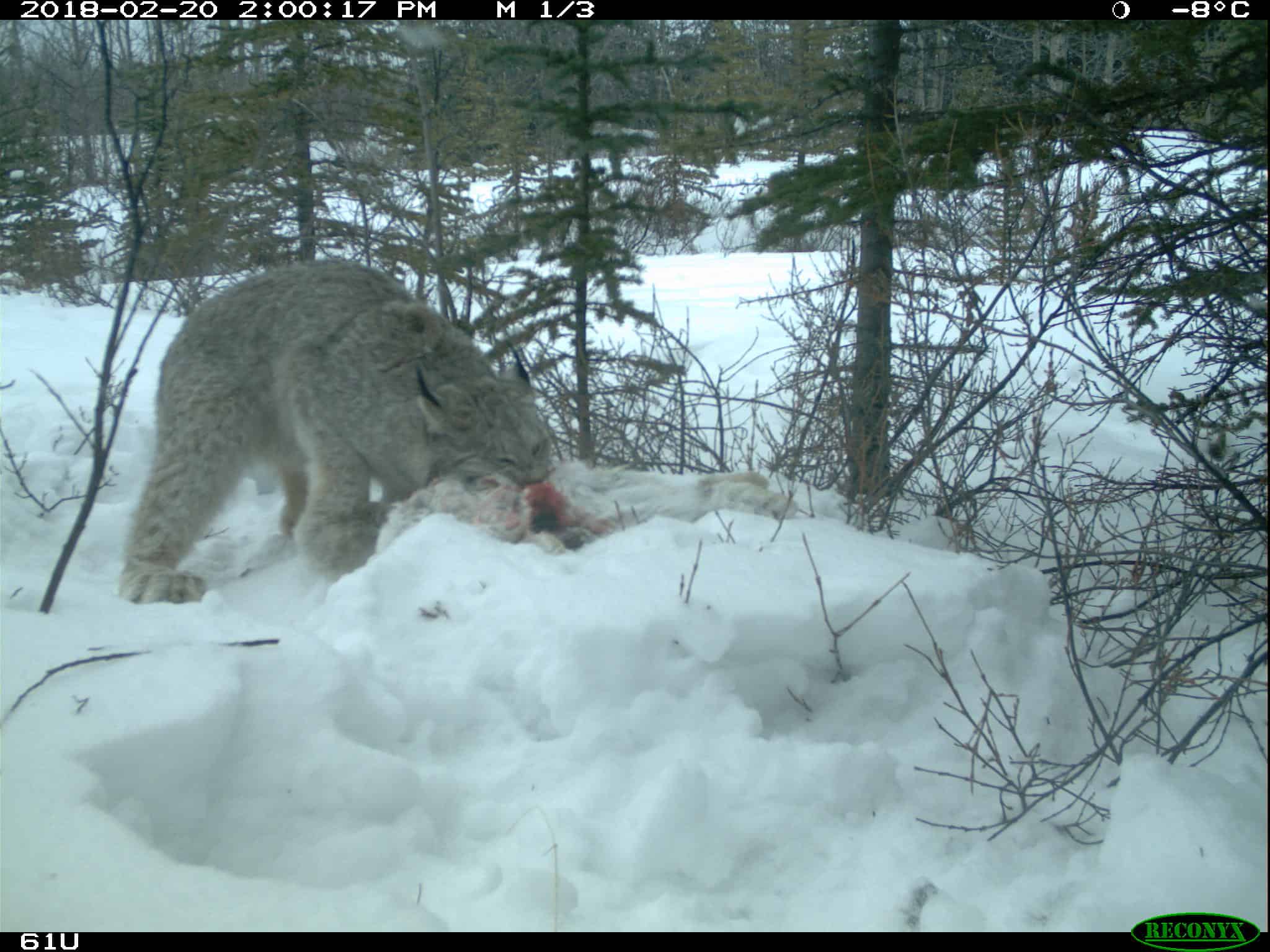
Credit: Michael Peers
From the summer of 2015 through the spring of 2018, the team put out 100 snowshoe hare (Lepus americanus) carcasses in random areas of Kluane National Park and Reserve in Yukon, about two hours west of Whitehorse. Many of these were from roadkill, or from animals used in other research that had to be euthanized for other reasons.
The photos they examined showed a number of different trends, according to their research published recently in the Journal of Animal Ecology.
Enlarge
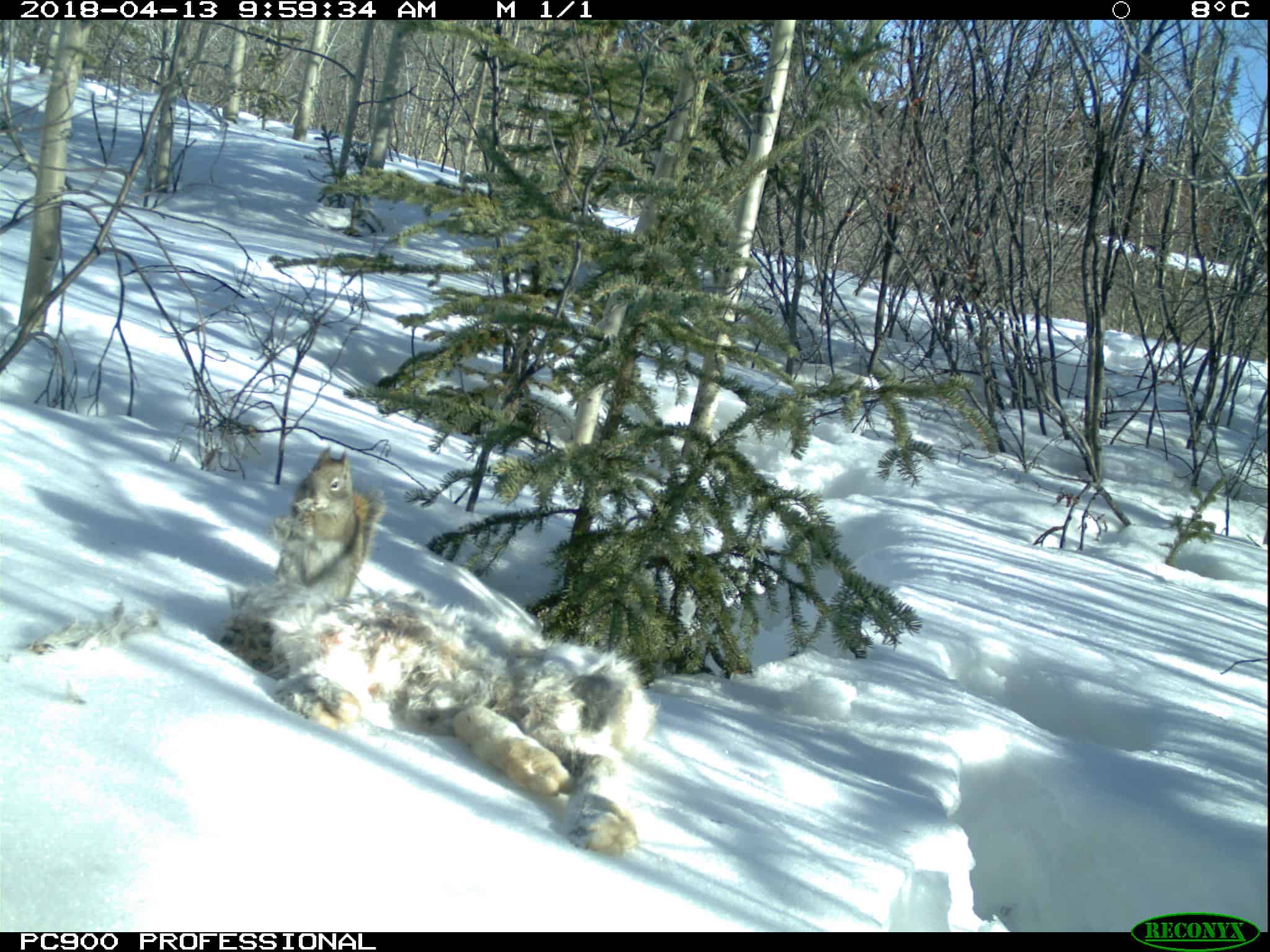
Credit: Michael Peers
The researchers saw 24 different species visiting the carcasses. The three most common mammal species were lynx, red squirrels (Tamiasciurus hudsonicus) and even some cannibalistic snowshoe hares.
Enlarge
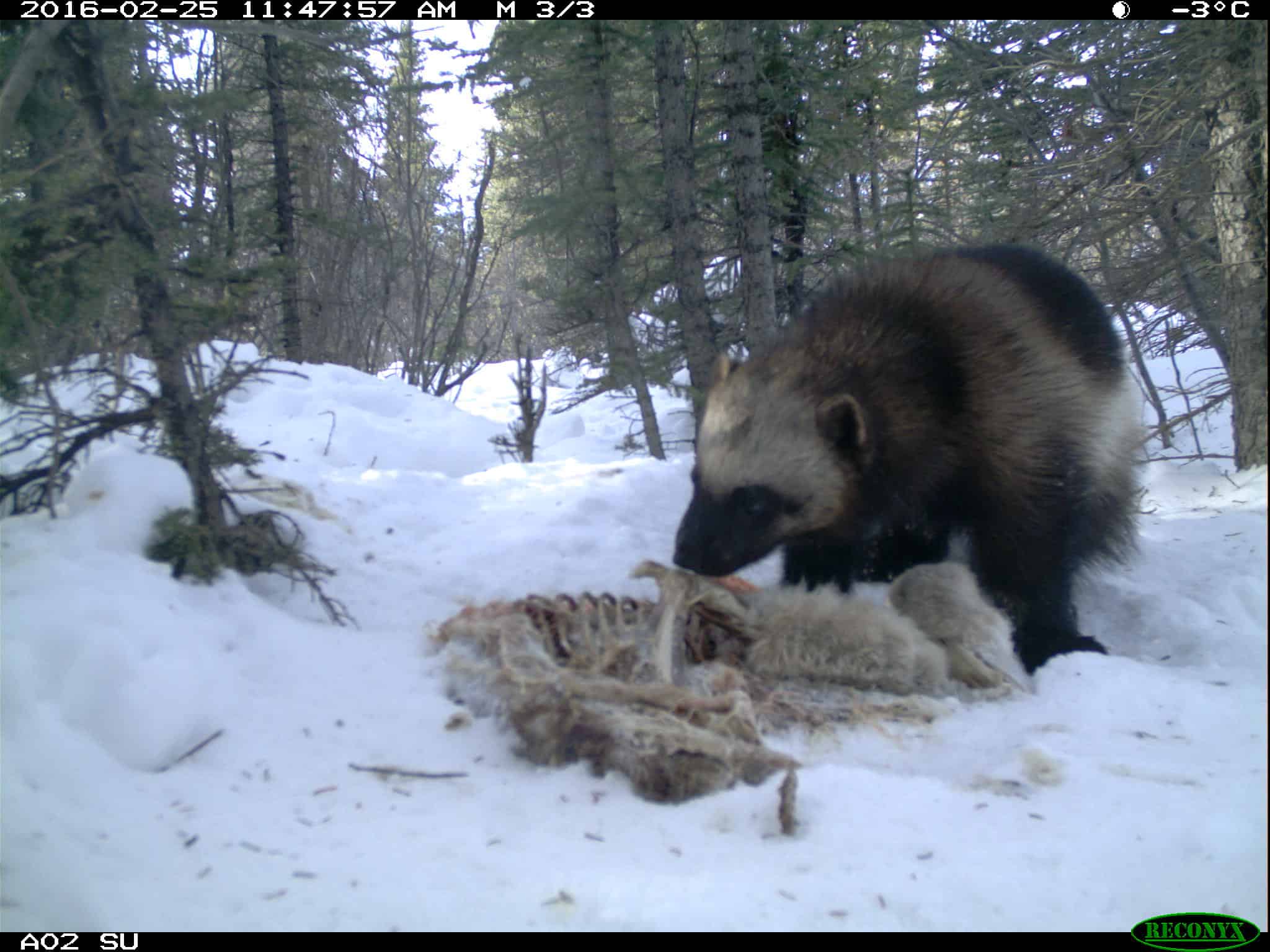
Credit: Michael Peers
But they also saw a whole host of other species, including black bears (Ursus americanus) and grizzly bears (Ursus arctos), northern flying squirrels (Glaucomys sabrinus) and a couple of wolverines (Gulo gulo).
Enlarge

Credit: Michael Peers
A number of birds also turned up. The most common scavengers overall were ravens (Corvus corax), Canada jays (Perisoreus canadensis) and magpies (Pica hudsonia), but goshawks (Accipiter gentilis) and bald eagles (Haliaeetus leucocephalus) were also captured in the photos.
Scavengers consumed the carcasses faster on warm days — possibly because the smell traveled farther and possibly because frozen meat may be harder to eat for many scavengers. While the carcasses were mostly laid out from May through September, Peers also speculated that being buried in the snow may mask the smell of the carcass for some potential scavengers.
Enlarge
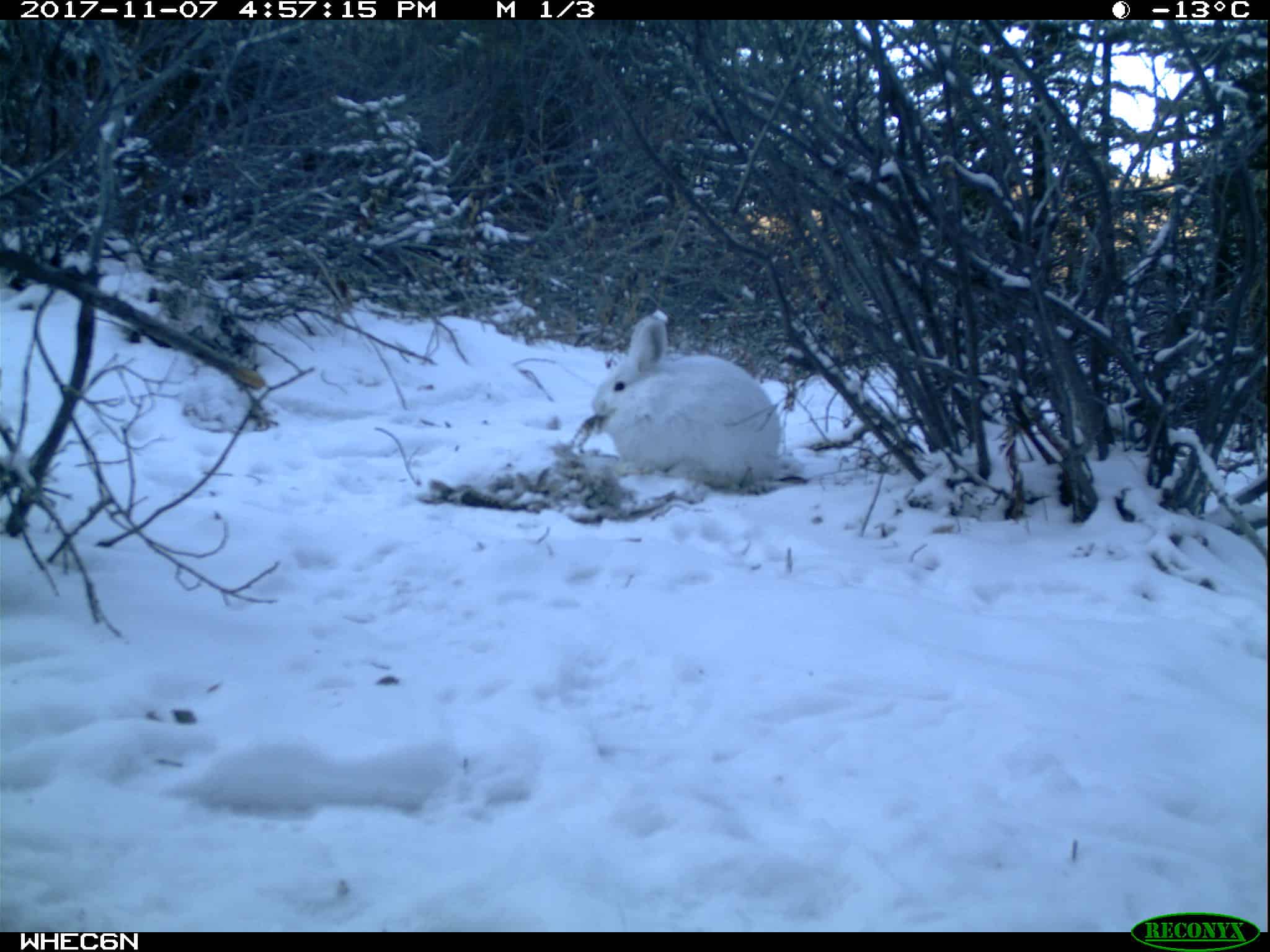
Credit: Michael Peers
Snowshoe hares themselves cannibalized the carcasses of other hares more often when it was colder, however. This may be due to a lack of food during the colder seasons, Peers said.
“That was the big surprise,” he said.
They also saw changes in the frequency that some species ate these carcasses.
Enlarge
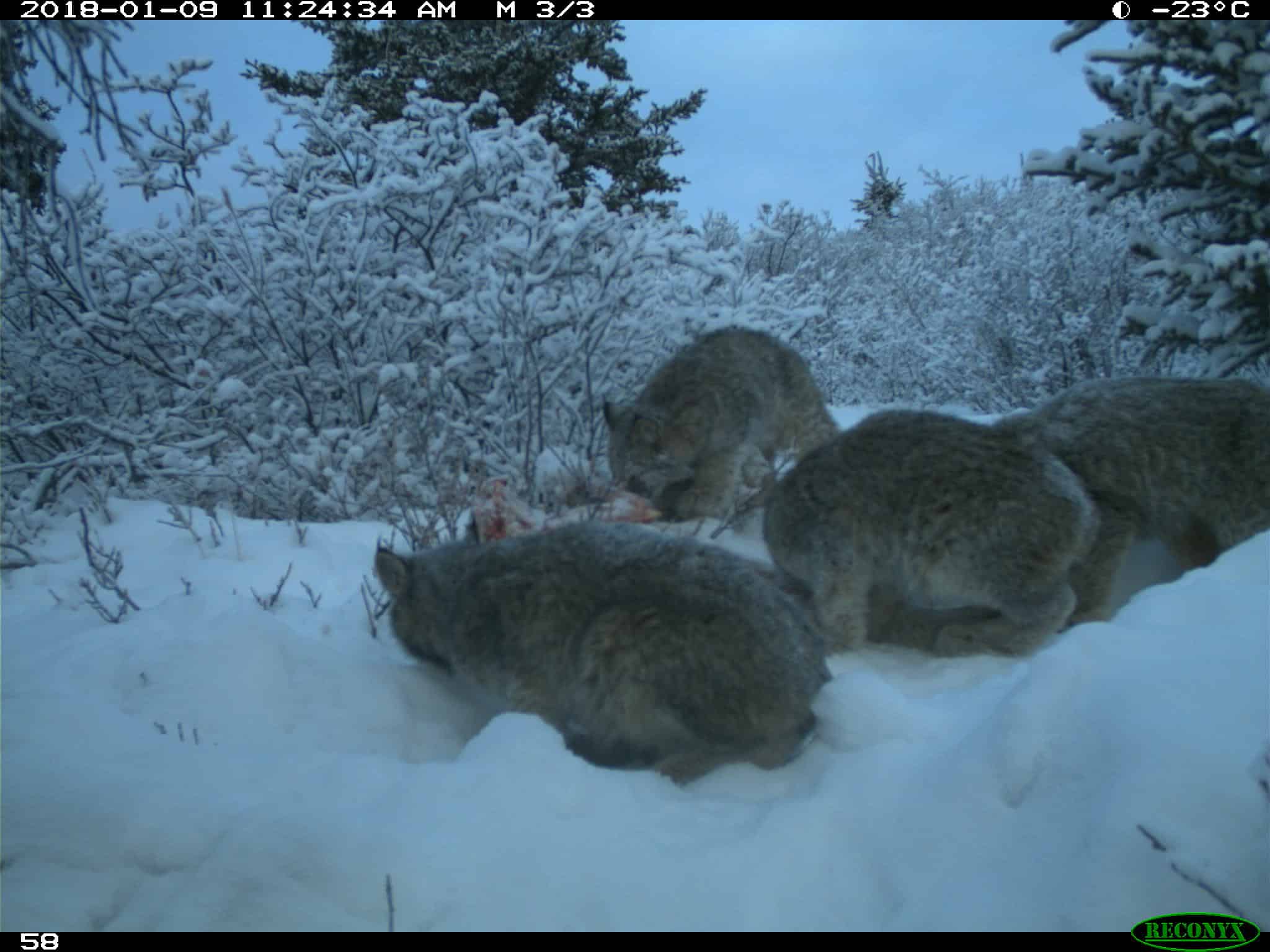
Credit: Michael Peers
Population densities of snowshoe hares vary wildly in this area, going from as few as five animals per square kilometer to about 200. The team’s research showed that the density of living hares affected how long the dead animal sat around before being eaten. That was especially true of scavenging lynx, which were less likely to eat carcasses when live prey was abundant. “When there were very few snowshoe hares in the forest, lynx would scavenge more,” Peers said.
The season also played an important role on the richness of the scavenger community. During the spring, many animals were just arriving on their northern migrations, and bears were just waking from hibernation.
Enlarge
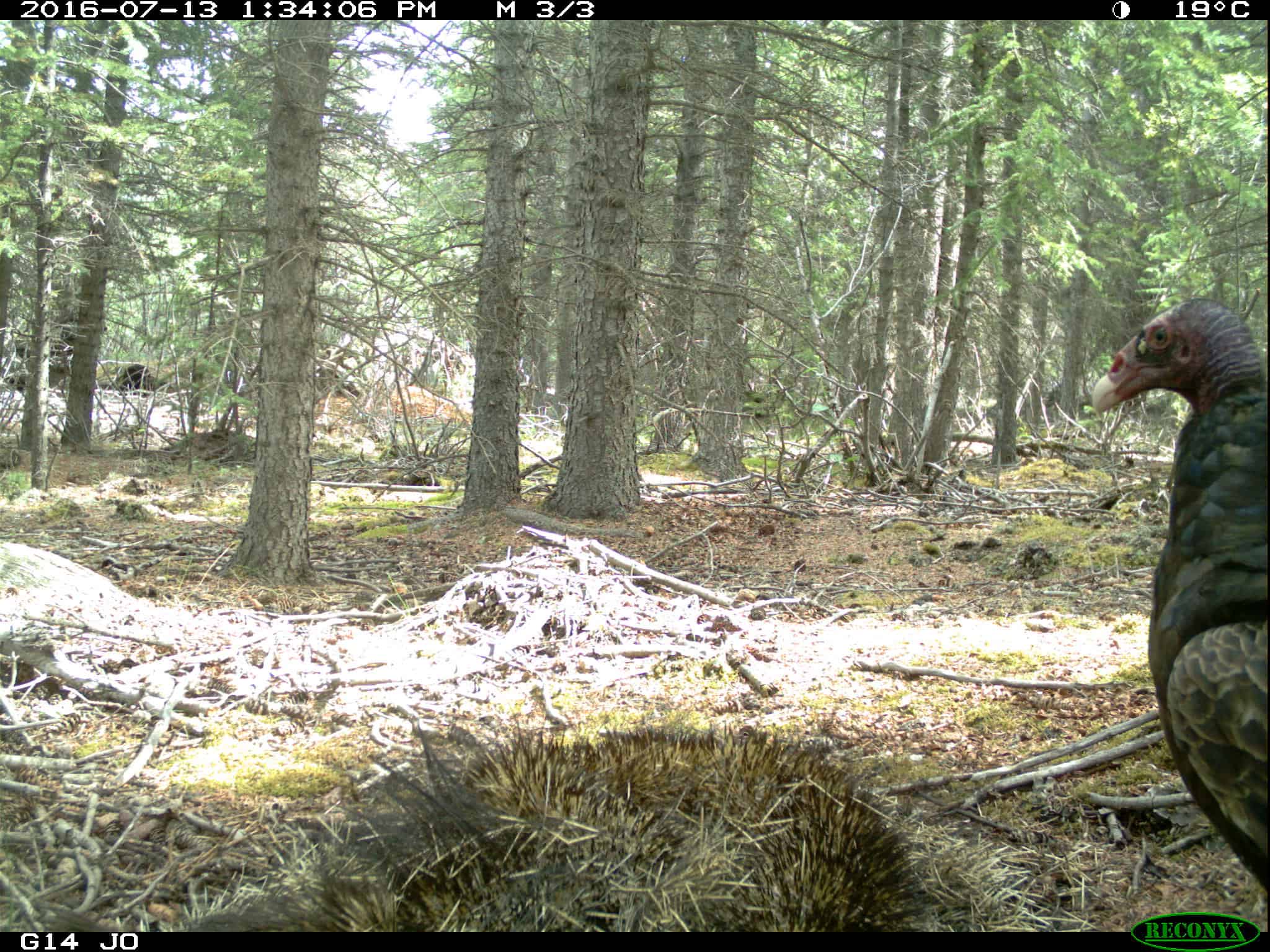
Credit: Michael Peers
Overall, this research helps to fill in the gaps of knowledge about the types of animals that typically scavenge on carcasses in an ecosystem devoid of more common scavengers like turkey vultures (Cathartes aura), though researchers were surprised to see one turn up so far north.
Enlarge

Credit: Michael Peers
Header Image: A bear scavenges a carcass in Kluane National Park and Reserve in Yukon. Credit: Michael Peers



